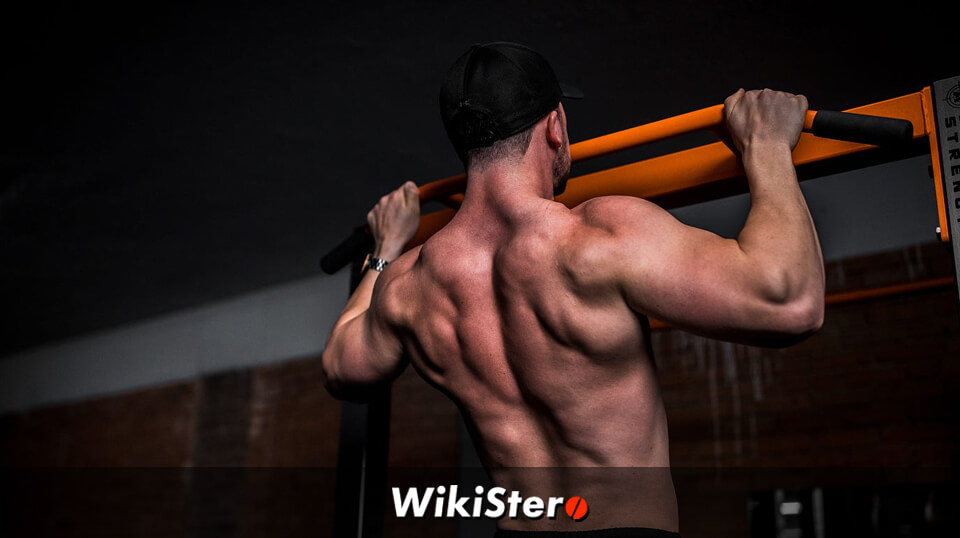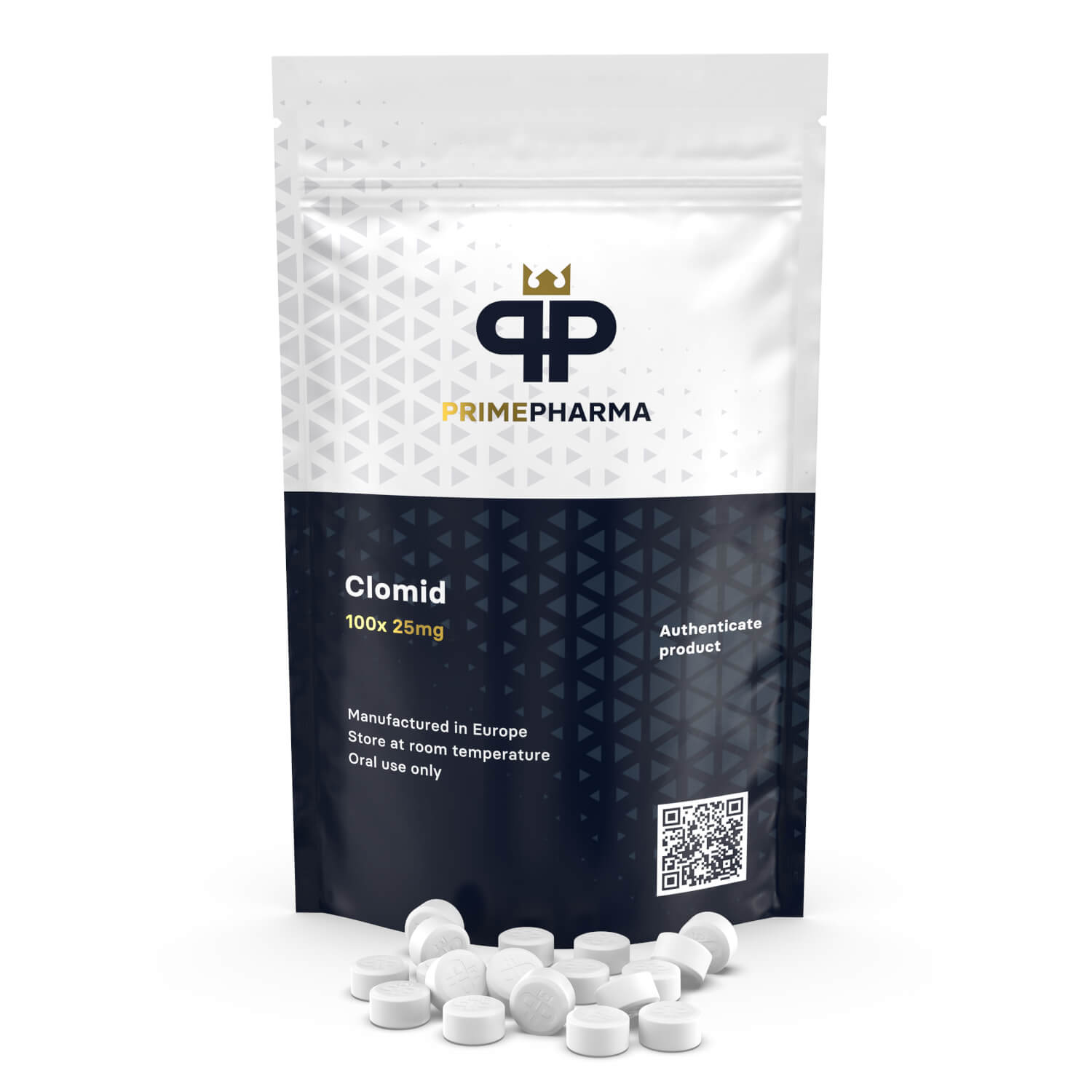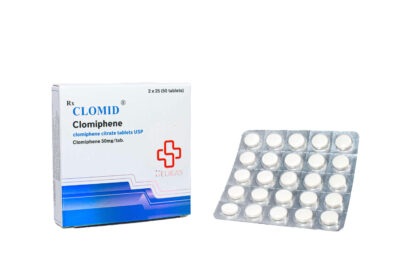 Clomid, or Clomiphene Citrate, is a medication widely recognized in the bodybuilding and athletic communities for its role in post-cycle therapy (PCT).
Clomid, or Clomiphene Citrate, is a medication widely recognized in the bodybuilding and athletic communities for its role in post-cycle therapy (PCT).
PCT is an essential phase that follows the completion of a cycle of anabolic steroids, aimed at restoring the body’s natural hormone production and mitigating side effects.
In this guide, we will delve into the significance of PCT, how Clomid functions, its advantages, possible side effects, and how to correctly incorporate Clomid into your PCT regimen.
Understanding Post-Cycle Therapy (PCT)
When anabolic steroids are introduced into the body, they significantly alter the natural hormonal balance by suppressing the body’s own testosterone production.
This suppression occurs because the exogenous (external) steroids provide more than sufficient testosterone or its derivatives, causing the body’s natural production to downregulate or even halt. Once the steroid cycle ends, the body faces a challenging period of hormonal imbalance.
Without intervention, this can lead to a dramatic drop in testosterone levels, resulting in muscle loss, increased fat deposition, mood disturbances, and other health issues.
Post-cycle therapy (PCT) is crucial as it aids in jumpstarting the body’s natural testosterone production, ensuring that the transition off steroids is smooth and the hard-earned muscle gains are preserved.
How Clomid Works
Clomid is a selective estrogen receptor modulator (SERM). To understand its mechanism, it’s essential to grasp the role of estrogen in male physiology.
Estrogen, while primarily known as a female hormone, also plays critical roles in the male body. When testosterone converts to estrogen, high levels of estrogen can signal the brain to reduce or stop the production of testosterone through a feedback loop involving the hypothalamic-pituitary-gonadal (HPG) axis.
Clomid works by blocking estrogen receptors, particularly in the hypothalamus, which tricks the brain into perceiving low estrogen levels.
As a result, the hypothalamus releases more gonadotropin-releasing hormone (GnRH), which prompts the pituitary gland to produce luteinizing hormone (LH) and follicle-stimulating hormone (FSH).
These hormones are crucial for stimulating the testes to produce testosterone, thereby restoring natural testosterone levels.

Benefits of Clomid in PCT
1. Restoring Natural Testosterone Levels:
The suppression of testosterone during a steroid cycle can be profound. By stimulating the production of LH and FSH, Clomid helps the testes resume normal testosterone production.
This process is vital to prevent a post-cycle crash, where testosterone levels could plummet, leading to significant muscle loss and other negative health effects.
2. Preserving Muscle Mass:
High testosterone levels are crucial for maintaining muscle mass. Without proper PCT, the decrease in testosterone can lead to catabolism, where muscle tissue breaks down.
Clomid helps maintain anabolic (muscle-building) conditions by ensuring testosterone levels are adequate, thereby preserving the muscle gains achieved during the steroid cycle.
3. Improving Mood and Energy Levels:
Testosterone influences mood, energy levels, and overall well-being. Low testosterone can cause depression, fatigue, and irritability.
By normalizing testosterone levels, Clomid helps stabilize mood and energy, contributing to better mental and physical health.
4. Reducing the Risk of Estrogenic Side Effects:
Although Clomid primarily works by blocking estrogen receptors to stimulate testosterone production, it also indirectly helps manage estrogen-related side effects.
High estrogen levels post-cycle can lead to gynecomastia (development of breast tissue in men) and water retention.
By modulating the body’s response to estrogen, Clomid helps mitigate these risks.
How to Use Clomid for PCT
Implementing Clomid in your PCT requires careful consideration of timing, dosing, and duration.
Here’s a detailed protocol:
1. Timing:
The optimal time to start Clomid is approximately two weeks after the last steroid injection. However, note that this timing is dependent on the type of anabolic steroid used. For example, if you use short-ester steroids like Testosterone Propionate, you may begin using Clomid a day or two sooner after your last injection.
On the other hand, if you are using long-ester steroids like Testosterone Enanthate, then you may have to wait for two to three weeks or 14 to 21 days before you start using Clomid. This delay allows the synthetic steroids to properly clear from your system, making PCT more effective.
Starting too early might not give the body enough time to adjust, while starting too late can prolong the period of low testosterone.
2. Dosing:
A common Clomid regimen begins with a higher dose to kickstart the process, followed by a tapering down.
Here’s a typical protocol:
Week 1: Start with 100 mg per day. This higher dose helps to quickly elevate LH and FSH levels.
Weeks 2-3: Reduce to 50 mg per day. This maintains the stimulation of testosterone production while allowing the body to adjust.
Week 4: Taper down to 25 mg per day. This final step helps the body transition back to normal hormonal balance without abrupt changes.
It is also important to note that the Clomid protocol can vary significantly and this can be influenced by your steroid dose and length of cycle. It is therefore worth remembering that your Clomid protocol could be adjusted to meet your individual cycle needs and this also applies to whether you use Clomid as a standalone or in combination with other compounds like Nolvadex or HCG during your PCT protocol.
3. Duration:
The duration of Clomid use typically spans 4 to 6 weeks, depending on the length and intensity of the steroid cycle. Shorter cycles might require only 4 weeks, while longer, more intense cycles could necessitate the full 6 weeks to ensure complete recovery.
 Potential Side Effects of Clomid
Potential Side Effects of Clomid
While Clomid is generally well-tolerated, it’s important to be aware of potential side effects as follows;
1. Visual Disturbances:
Some users may experience blurred vision or other visual disturbances, such as seeing flashes of light or floaters.
These symptoms are usually temporary and resolve after discontinuing Clomid. However, if you experience severe or persistent visual issues, it’s important to consult a healthcare provider.
2. Mood Swings:
Although Clomid can improve mood by restoring testosterone levels, it can also cause mood swings or emotional instability in some individuals.
Monitoring your mood and discussing any significant changes with a healthcare provider is therefore crucial.
3. Hot Flashes:
Similar to menopausal symptoms, some men may experience hot flashes or night sweats while taking Clomid. These are generally mild and transient side effects.
4. Gastrointestinal Issues:
Nausea, bloating, or stomach discomfort can occur when you use Clomid, although these side effects are relatively rare.
However, one effective way to minimize gastrointestinal discomfort is to take Clomid with food.
Considering using Clomid for PCT? It’s essential to consult with a healthcare professional before starting any PCT protocol.
A medical professional can provide personalized advice, ensure Clomid is appropriate for your specific needs, and guide you on proper dosing, timing, and potential interactions with other medications. Your health and safety should always be the top priority and at Wikistero, you can now contact our free coach for tailored advice on your steroid cycle and PCT options.
Conclusion
Clomid is a powerful tool for athletes and bodybuilders looking to restore their natural testosterone levels after a steroid cycle.
By understanding how Clomid works, its benefits, and how to properly implement it in your PCT regimen, you can maximize your recovery and maintain the gains you have worked hard to achieve.
But don’t forget to always prioritize safety and consult with a healthcare professional before starting any PCT protocol.
With the right approach, you can navigate the post-cycle period effectively and support your long-term health and fitness goals.